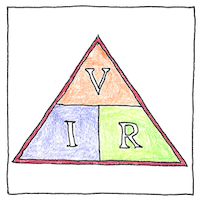Georg Ohm
electromagnetism

|
Ohm’s law
Alessandro Volta’s invention of the battery in 1899 gave scientists a means to understand electricity. Georg Ohm taught mathematics and physics in various schools as he tried to improve his position by writing a textbook on geometry and experimenting with electric circuits. He published Die galvanishe Kette, mathematisch bearbeitet in 1827 establishing the law that is named after him, that the voltage across a conductor divided by the current equals the resistance.
The circuit
The discovery of Ohm’s law would not have been possible without Volta’s invention of a continuous source of electricity which resulted in his invention of the first electric circuit. Benjamin Franklin experimented with lightning in 1749. While Volta invented the battery, Alexander Humbolt was on the famous voyage on which he discovered and experimented with the electric eel. Ørsted discovered electromagnetism in 1820; Faraday invented the electric motor in 1821. Meanwhile, people couldn’t turn lights on by flicking a switch, or call each other on the phone, or listen to the radio, or watch TV, or refrigerate food without blocks of ice. There was no vacuum cleaner or washing machine, no digital clock or battery-powered watch, no toaster, no food processor, no microwave oven, no flashlight, no electronic calculator, and no computer.
Contiguity
Georg Ohm argued against “action at a distance.” The electromagnetic force applied across contiguous particles, he said. By 1600 William Gilbert realized electric attraction is not a disturbance of the air. So one might ask, “Particles of what?” A person’s senses are only so refined. One cannot see, one cannot count, one cannot smell each unknown particle impelling its neighbors. And the force communicates across empty space like light, whether it’s a wave or a stream of particles, moving, faster than thought, at the speed of light.



Our unit of resistance, the ohm, is named after Georg Ohm and given its magnitude according to Ohm’s law. Each item in Ohm’s law is named after a scientist: Resistance in ohms equals voltage in volts divided by current in amperes.
See also in The book of science:
Readings in wikipedia: